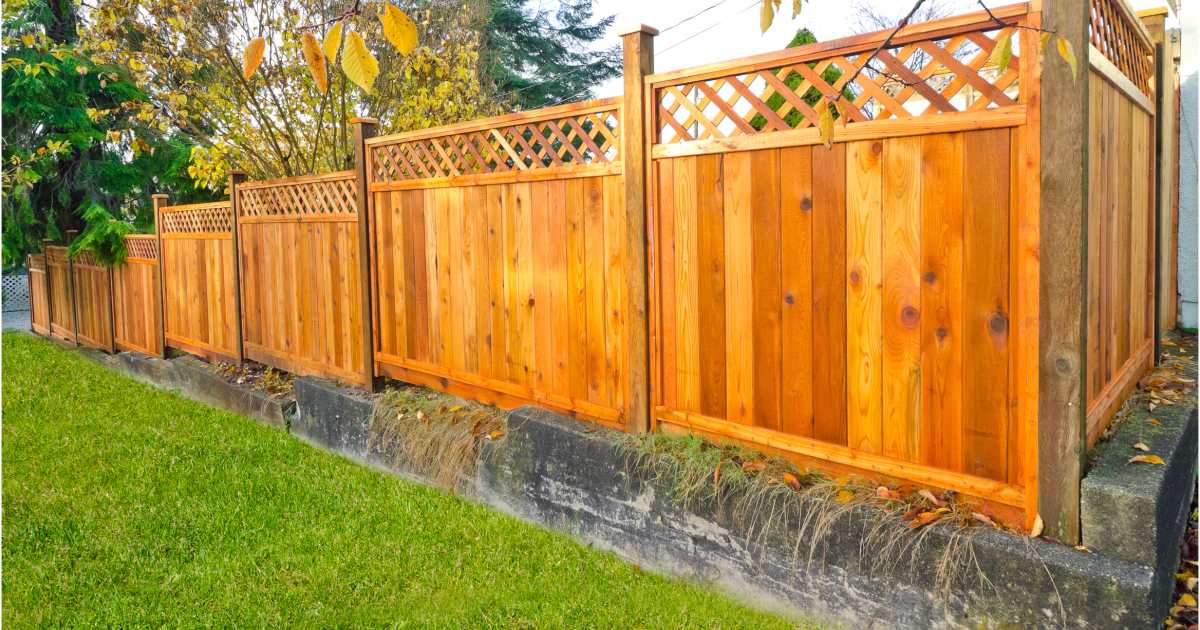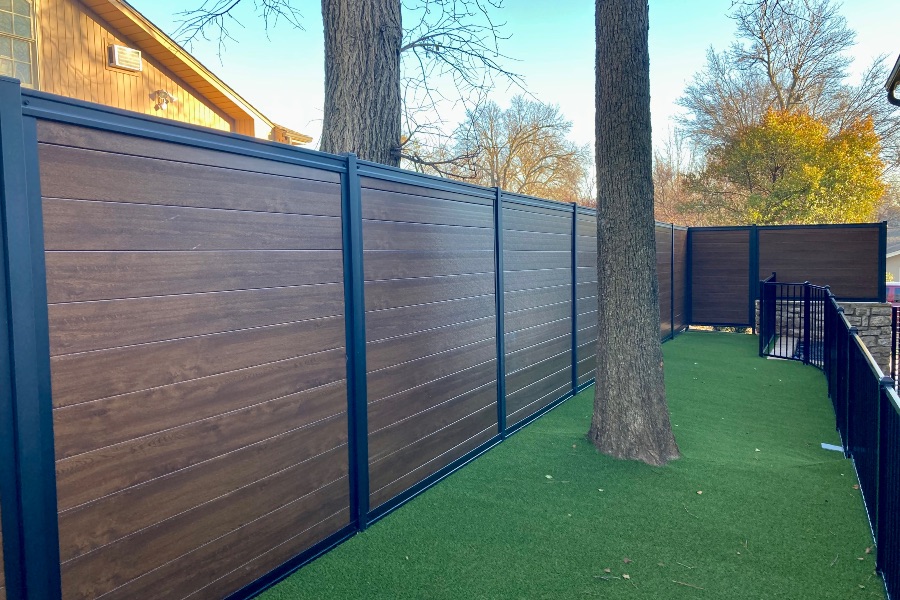All Categories
Featured
Your fencing is exposed to numerous weather condition problems year-round, and while it acts as a vital part of your residential property, it's additionally among the most at risk components when it concerns weather-related damages. Harsh winds, heavy rain, extreme temperature levels, and UV direct exposure can all take a toll on your fencing's stability, leading to damage. There are a couple of actions you can take to safeguard your fencing and lengthen its lifespan. Below are some effective techniques to guard your fence from weather-related damage.
Wooden Fencings: While wood is a timeless choice for fence, it is prone to rot, bug, and warping damages, especially in locations with high moisture. Pressure-treated wood or cedar is more resilient, yet normal maintenance is necessary to keep it in excellent condition. Plastic Fence: Vinyl is a superb choice for those trying to find a low-maintenance and weather-resistant fence. It's unsusceptible moisture, won't warp or split in the warm, and stands up to fading from UV rays. Steel Fence: Wrought iron and light weight aluminum are sturdy materials for fencing, yet they call for a rust-resistant finish to shield them from rust because of dampness. A protective finish or normal upkeep can protect against rust and prolong the life of steel fences. Composite Secure Fencing: Made from a blend of timber fibers and plastic, composite fencings are extremely resistant to weather elements, including wetness, uv, and warm rays. This product supplies an equilibrium of sturdiness and aesthetic allure. Selecting a material suited to your environment will supply much better protection for your fence the long-term.
Seal or Stain the Timber: Applying a premium sealant or tarnish to your wood fencing develops a water resistant barrier that avoids moisture from entering the timber. It additionally helps protect the wood from UV rays, which can cause discoloration and drying out. Reapply Sealer Routinely: Over time, the safety barrier of your sealer or tarnish can put on down. Depending on your environment, it's a good idea to reapply each to two years to maintain the wood safeguarded. This treatment will certainly preserve the fence's look, avoid rot, and prolong its life expectancy.
![]()
For additional security, think about making use of wind-resistant mesh screens or panels in locations where wind is a considerable concern. This added layer can aid decrease the force that the wind applies on your fencing.
Examine Drain: Make certain that the ground around your fence inclines far from the posts. Appropriate water drainage enables water to stream far from the fence, avoiding moisture buildup. Set Up Drainage Equipments: In areas where drainage is a worry, think about including a French drainpipe or gravel around the base of your fence articles to reroute water far from the structure. Excellent drain can prevent rot, rust, and other kinds of weather-related degeneration.
![]()
![]()
Concrete Footings: Establish fencing articles in concrete to prevent them from loosening over time because of dirt erosion or shifting ground. Metal Braces: Including steel braces to fencing messages can provide extra strength and lower the danger of breaking or leaning. Strengthening your posts makes certain that your fence will remain in place, also throughout severe weather condition.
For wooden fences, delicately wash the surface with a light detergent to eliminate dust and crud. For plastic fencings, use a soft towel and cleansing option to stop build-up. For metal fencings, examine for corrosion and sand it off prior to using a fresh layer of paint. Verdict. Your fencing is an essential feature of your residential property, and with the ideal treatment, it can hold up against the difficulties postured by the weather condition. By selecting resilient materials, doing normal maintenance, and enhancing powerlessness, you can shield your fence from the aspects and prolong its life. Routine examinations, using protective coverings, and taking actions to manage dampness and wind direct exposure will certainly aid make certain that your fence continues to be solid, functional, and appealing for many years ahead.
- Select Weather-Resistant Materials. The products you select for your fence can have a major influence on its ability to withstand the components. Various materials are much better outfitted to handle specific weather condition conditions. Right here's a malfunction of how different products hold up versus the climate:
Wooden Fencings: While wood is a timeless choice for fence, it is prone to rot, bug, and warping damages, especially in locations with high moisture. Pressure-treated wood or cedar is more resilient, yet normal maintenance is necessary to keep it in excellent condition. Plastic Fence: Vinyl is a superb choice for those trying to find a low-maintenance and weather-resistant fence. It's unsusceptible moisture, won't warp or split in the warm, and stands up to fading from UV rays. Steel Fence: Wrought iron and light weight aluminum are sturdy materials for fencing, yet they call for a rust-resistant finish to shield them from rust because of dampness. A protective finish or normal upkeep can protect against rust and prolong the life of steel fences. Composite Secure Fencing: Made from a blend of timber fibers and plastic, composite fencings are extremely resistant to weather elements, including wetness, uv, and warm rays. This product supplies an equilibrium of sturdiness and aesthetic allure. Selecting a material suited to your environment will supply much better protection for your fence the long-term.
- Consistently Deal With Wooden Fences. Securing it from moisture, temperature level, and sunshine fluctuations is vital if you have a wooden fence. Timber can take in dampness from rain, snow, or humidity, causing it to rot and weaken. Right here's exactly how you can protect wooden fencings:
Seal or Stain the Timber: Applying a premium sealant or tarnish to your wood fencing develops a water resistant barrier that avoids moisture from entering the timber. It additionally helps protect the wood from UV rays, which can cause discoloration and drying out. Reapply Sealer Routinely: Over time, the safety barrier of your sealer or tarnish can put on down. Depending on your environment, it's a good idea to reapply each to two years to maintain the wood safeguarded. This treatment will certainly preserve the fence's look, avoid rot, and prolong its life expectancy.

- Mount Windbreaks. Solid winds can create considerable damages to fencings, especially those made of light-weight products or tall structures. These natural barriers can help deflect wind, avoiding direct gusts from harming your fencing.
For additional security, think about making use of wind-resistant mesh screens or panels in locations where wind is a considerable concern. This added layer can aid decrease the force that the wind applies on your fencing.
- Ensure Proper Drain Around Your Fencing. Standing water is among the leading sources of fencing damages, particularly for wood fencings. Water can weaken the fencing posts, creating them to rot and wear away much more promptly. To stop this:
Examine Drain: Make certain that the ground around your fence inclines far from the posts. Appropriate water drainage enables water to stream far from the fence, avoiding moisture buildup. Set Up Drainage Equipments: In areas where drainage is a worry, think about including a French drainpipe or gravel around the base of your fence articles to reroute water far from the structure. Excellent drain can prevent rot, rust, and other kinds of weather-related degeneration.

- Trim Overhanging Branches and Vines. Trees and plants near your fence might appear like an attractive addition, however they can present risks when left uncontrolled. Overhanging tree branches and vines can trigger damages to your fencing during storms or high winds. Additionally, creeping plants can trap dampness against wood fences, accelerating the decomposing procedure. To protect your fence, trim any branches or plants that hang over or near the fencing regularly. This will reduce the chance of dropping debris and prevent dampness accumulation.
- Enhance Fence Posts. Fence blog posts are prone to changing, leaning, and decaying, specifically during durations of extreme weather. If your fence is in an area that experiences high winds or ices up during winter season, it's crucial to enhance the blog posts to preserve stability.

Concrete Footings: Establish fencing articles in concrete to prevent them from loosening over time because of dirt erosion or shifting ground. Metal Braces: Including steel braces to fencing messages can provide extra strength and lower the danger of breaking or leaning. Strengthening your posts makes certain that your fence will remain in place, also throughout severe weather condition.
- Regular Examinations and Maintenance. Check your fencing after tornados or hefty rainfall to look for concerns such as loosened boards, sagging posts, or rusted locations. Additionally, cleaning your fence periodically aids keep its problem.
For wooden fences, delicately wash the surface with a light detergent to eliminate dust and crud. For plastic fencings, use a soft towel and cleansing option to stop build-up. For metal fencings, examine for corrosion and sand it off prior to using a fresh layer of paint. Verdict. Your fencing is an essential feature of your residential property, and with the ideal treatment, it can hold up against the difficulties postured by the weather condition. By selecting resilient materials, doing normal maintenance, and enhancing powerlessness, you can shield your fence from the aspects and prolong its life. Routine examinations, using protective coverings, and taking actions to manage dampness and wind direct exposure will certainly aid make certain that your fence continues to be solid, functional, and appealing for many years ahead.
Latest Posts
Join WyHy FCU – Exclusive Benefits for Your Financial Success
Published May 22, 25
1 min read
Join WyHy FCU – Top Benefits for Your Financial Future
Published May 21, 25
1 min read
Discover Cost-Effective Auto Repairs with Montclare’s Monthly Service Specials
Published May 20, 25
1 min read
More
Latest Posts
Join WyHy FCU – Exclusive Benefits for Your Financial Success
Published May 22, 25
1 min read
Join WyHy FCU – Top Benefits for Your Financial Future
Published May 21, 25
1 min read
Discover Cost-Effective Auto Repairs with Montclare’s Monthly Service Specials
Published May 20, 25
1 min read